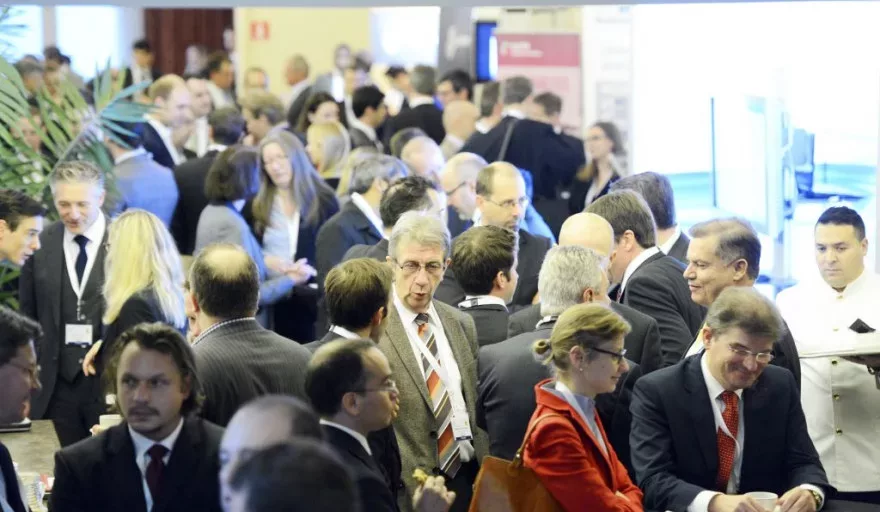Demand for natural gas in Europe has fallen dramatically, which has led to a severe drop in imports of LNG. Today, there is considerable uncertainty over the future role of LNG in Europe’s gas supply.
This has prompted Wood Mackenzie, a leader in commercial intelligence for the energy, metals and mining industries, to organise a round-table on this theme at this year’s European Autumn Gas Conference. In this interview with Alex Forbes, Associate Editor of Gastech News, two of the company’s energy specialists – Massimo Di-Odoardo, Principal Analyst for European Gas Research, and Peter Mackey, Head of Gas & Power Consulting for Europe, the Middle East, Africa, Russia, and the Caspian region – outline the key issues that the round-table will address.
Can you explain why LNG into Europe is such an important topic for this year’s European Autumn Gas Conference?
Peter Mackey: With more than 150 Bcm of LNG under construction globally, there is a general consensus that LNG will become an increasingly important part of the European supply story. However there are some key elements where the outlook for LNG into Europe becomes less clear and we see diverging opinions in the market. Some of the key questions that we need to be asking ourselves are:
- When will LNG come back to Europe?
- What role will US LNG supply play in European gas?
- What impact will LNG will have on European gas prices, and how will European prices impact the ability of new supply projects to proceed?
Taking each of those points in turn, let’s explore them further, starting with: when is LNG likely to come back to Europe?
Massimo Di-Odoardo: Over the last couple of years the trend on global LNG has been pretty clear. Global LNG has been chasing high prices in Asia and Latin America, and LNG imports in Europe have declined. But this summer something seems to have changed. Spot prices in Asia are trading just above US$10/MMBtu and LNG tankers from Qatar are queuing up at UK LNG terminals.
So has the time arrived for LNG to come back into Europe? Well, much will depend upon elements that have characterised the debate so far, including the pace of growth of LNG demand in emerging markets, and China in particular, the return of nuclear in Japan, and the potential for delays on Australian LNG projects.
But we believe that equally important, and perhaps less understood, will be the increasing role of demand seasonality in China and the potential for additional demand in Asia should prices reduce from the highs we’ve seen in the past. So while there might be consensus on LNG coming back into Europe we’d like to discuss the timing and the extent for this to happen.
Since 2010 we have seen a remarkable stampede in the US to construct LNG export facilities. How important a market for US LNG do you expect Europe to be?
Peter Mackey: There is no doubt that the shale gas revolution in the US has fundamentally transformed the gas industry globally. As a result, the US LNG supply story has dominated the narrative of late.
With more than 30 US LNG export projects proposed, totalling in excess of 300 mtpa of LNG, the question really becomes one of how much US LNG supply will actually proceed and by when. These questions represent a key uncertainty not just for the European gas market but for the global LNG market. Here at Wood Mackenzie we now forecast 80 mtpa of US Lower 48 LNG exports by 2025, which is equivalent to about 110 Bcm/year.
However, there are widely differing views in the market on this point alone. It will be interesting to hear the outlooks of conference delegates for US LNG exports during our round-table.
The last point I’d like to make on US LNG export is one of economics. Against the forward curve the economics of US LNG into Europe are certainly not as attractive as into Asia, which begs the question of if and how companies are creating value through bringing LNG into Europe – a very important question for the European gas industry as a whole.
What are the implications of all this for natural gas pricing in Europe?
Massimo Di-Odoardo: The extent and timing of LNG coming back into Europe will be of primary importance for pricing formation – particularly because this might just happen at a time when new production from the UK, from Norway, and from Azerbaijan will hit the market. And, arguably, the perspective for gas demand growth at that time does not look promising.
We saw something similar happen back in 2009 when liquid hubs in north-west Europe, and in the UK in particular, had to absorb substantial volumes from Qatar. At that time the price collapsed to $5/MMBtu and piped supply, particularly from Russia, was backed out. So what we would like to discuss is how low price could go in this period, and, more importantly, what would be the price formation mechanism in Europe during that period.
Looking to the future can you summarise your views of how important a role LNG will play in Europe’s energy mix?
Peter Mackey: As we said at the outset there is a general consensus that LNG will become an increasingly important part of the European supply story. But there are major uncertainties that remain, as we’ve discussed, such as timing, the role of US LNG supply in particular, and the gas pricing that we will see in Europe as a result.
Now, here at Wood Mackenzie we have a perspective on all of these questions but we’re really looking forward to hearing the viewpoints of conference delegates. I imagine there may be some robust debate.
For further event information on the European Autumn Gas Conference, click here.



















